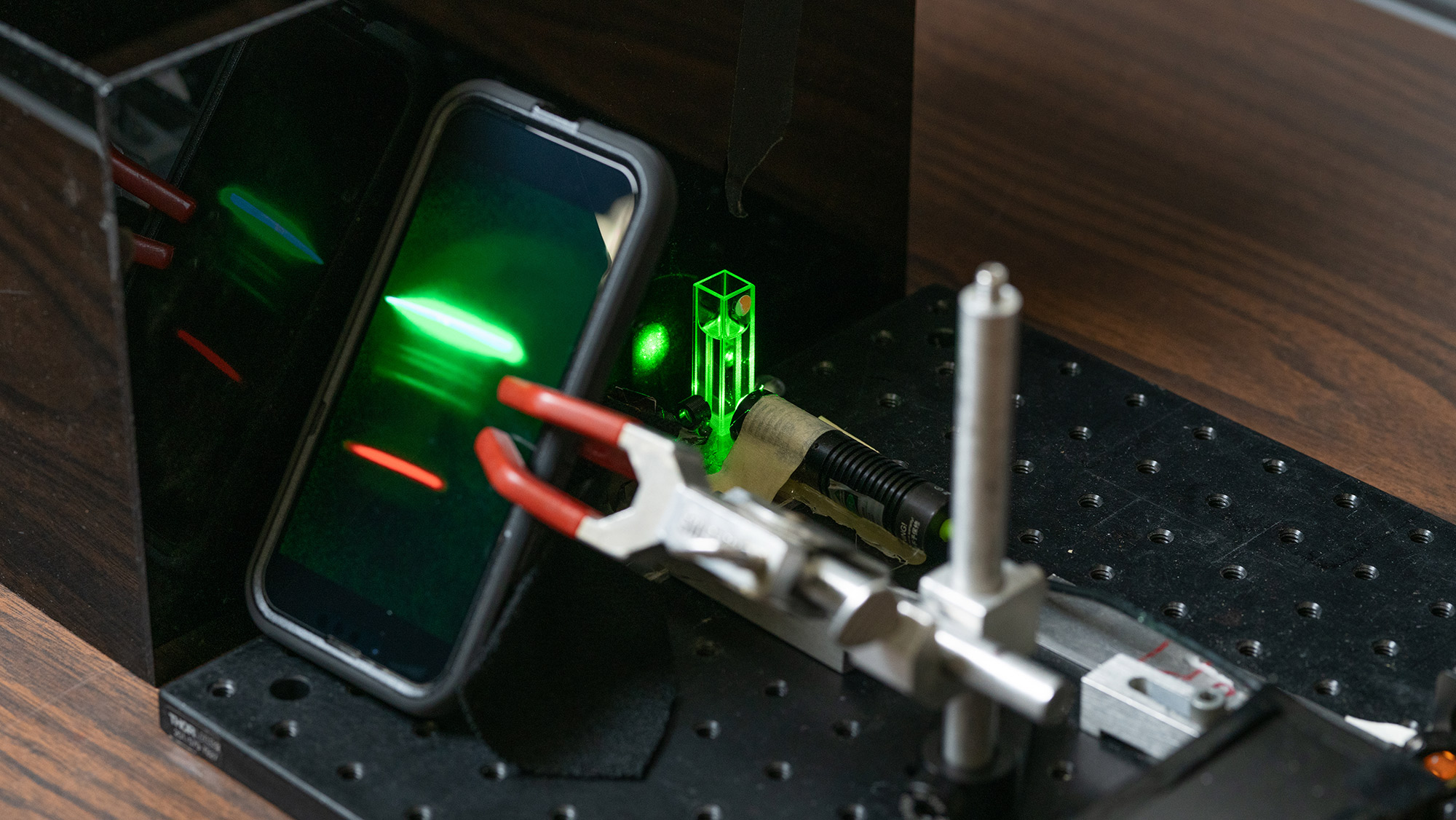Dr. Peter Rentzepis, a professor in the Department of Electrical and Computer Engineering at Texas A&M University, invented a low-cost cell phone-based Raman spectrometer system to identify unknown biological molecules within minutes. The invention combines the technology of a cell phone camera and a Raman spectrometer. This new Raman spectrometer system integrates lenses, a diode laser, and a diffraction grating — a small, thin, square-shaped surface that scatters light for analysis — combined with a cell phone camera to record the Raman spectrum. Peaks in the spectrum provide detailed data about a substance’s chemical composition and molecular structure, depending on its intensities and positions. To use the device, a cell phone is placed behind the transmission grating with the camera facing the grating, ready to record the Raman spectrum. A laser shoots a beam into a sample of unknown material, such as a bacterium, on a slide. The camera records the spectrum, and when paired with an appropriate cell phone application/database, this handheld instrument can enable rapid materials identification on site. While traditional Raman spectrometers cost up to thousands of dollars, Rentzepis’ invention can be made at a significantly lower cost and can identify materials at a significantly quicker speed. @ https://engineering.tamu.edu/news/2024/06/pocket-sized-invention-revolutionizes-ability-to-detect-harmful-materials.html

